On the 31st of October every year people dress up in fancy dress costumes, carve scary faces on pumpkins and go trick or treating to neighbouring houses. Here we’ll have a look at the origins of Halloween. Where did the customs originate and why are they celebrated the way they are today?
Where does Halloween come from?
The origin of Halloween and many of its customs dates back to the ancient Celtic festival of Samhain (SOW-win) which means ‘Summer’s end’ in Irish. Samhain marked the end of the harvest and the beginning of winter and the Celtic new year.
It was thought that at Samhain the veil between the world of the living and the dead was at its thinnest. This was an ideal time to divine the future and communicate with loved ones who had passed on to the other side.

It was a feast of celebration with bonfires and fortune telling where the spirits of the departed were both expected and welcomed.
The Roman influence
When the Roman Empire took over the Celtic lands after the 1st century AD, they adopted and combined many of the Celtic feasts with their own.
Samhain was no different, one of the festivals they merged it with was Feralia. This feast which was celebrated in late October traditionally commemorated the passing of the dead.
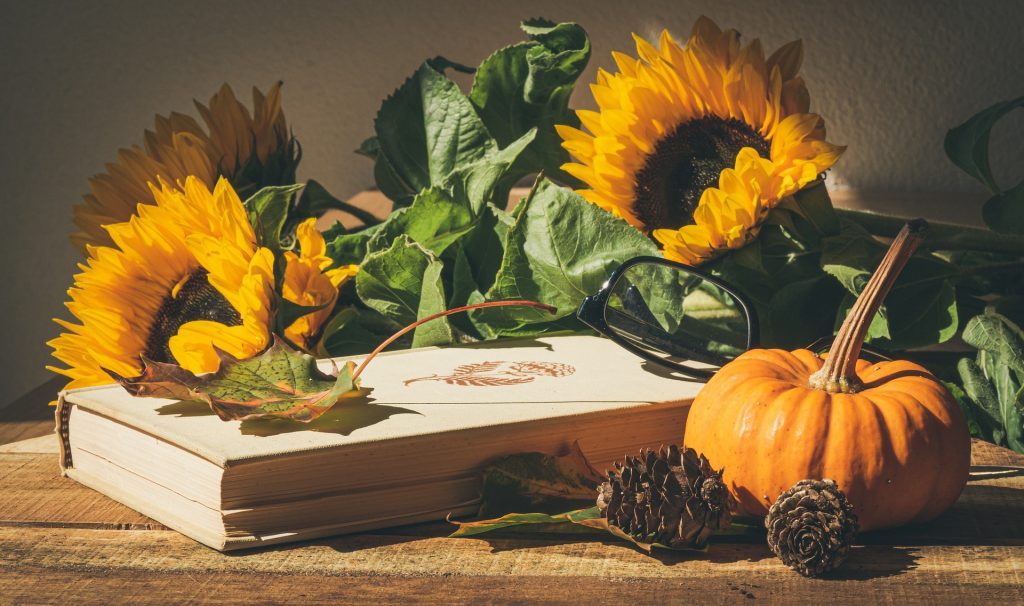
The arrival of Christianity
Years later, Pope Gregory III designated the 1st of November as All Saints Day, a time to honour all the Catholic saints.
As Christianity arrived in Ireland, All Saints Day began to incorporate some of the traditions of Samhain. The evening before All Saint’s day became known as All Hallow’s Eve and later shortened to Halloween.
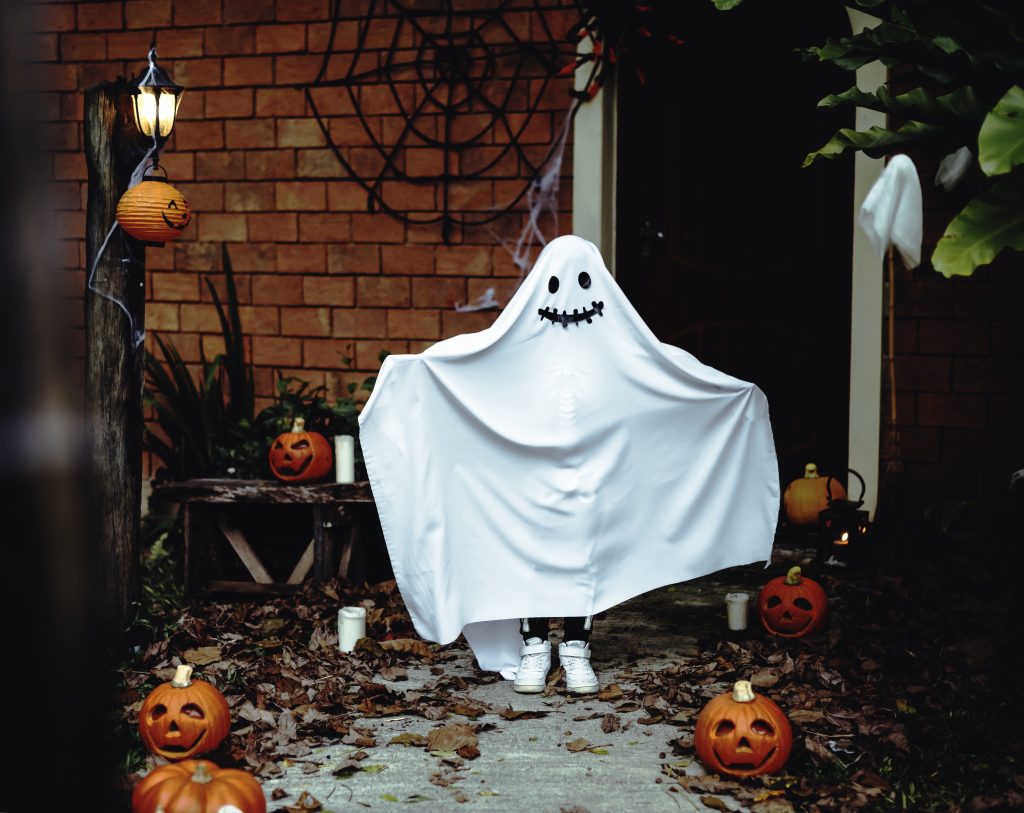
Fancy dress
At Samhain there was the chance that along with the departed spirits of loved ones, unwanted souls might also return and cause trouble.
In order to deceive the spirits, the Celts would darken their faces with ash from the fire so as not to be recognised by those they wished not to see.
This ‘guising’ later evolved into wearing masks and scary costumes to ward off the attention of the evil spirits.
Bobbing for apples
Bobbing for apples, candy apples and catching a spinning apple hung from the ceiling with your teeth are games and treats associated with Halloween.
We have the Roman festival of Pomona to thank for the addition of these customs. The Romans celebrated Pomona, the goddess of agriculture and abundance around the end of October. It made sense for them to also blended it with the Celtic feast of Samhain.

They believed that the first person to catch a bobbing apple in their teeth would be the first to marry in the new year.
Another courting ritual for the single ladies (or guys) involved the skin of the apple. If you threw a long unbroken apple peel over your shoulder, the shape of how it fell would show the initial of the person you would marry.
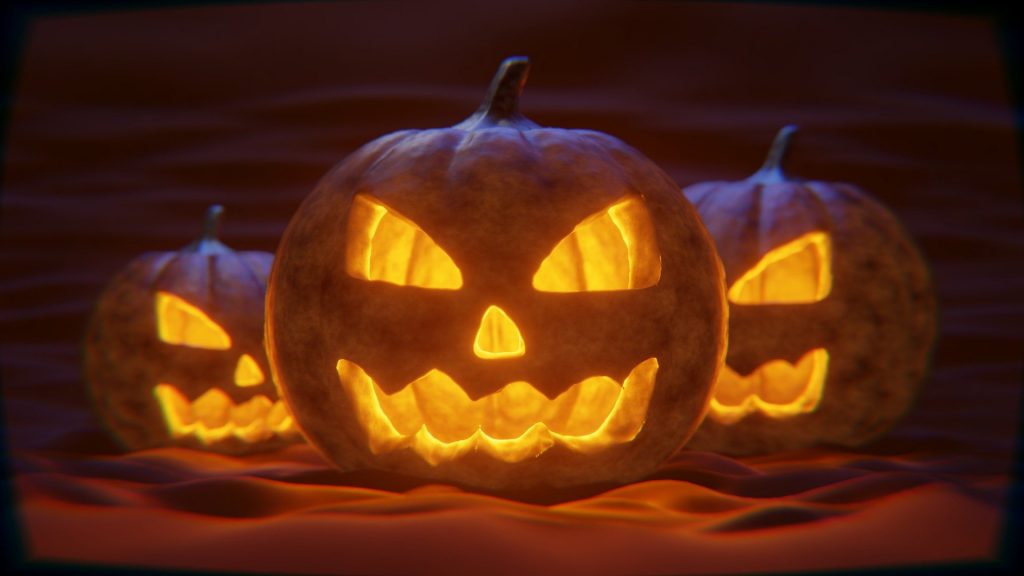
Jack-o’-lantern
The story of Jack-o’-lantern, or Jack the lantern as said in Ireland, comes from the popular folk story of Stingy Jack.
The story goes that Stingy Jack was a drunken but clever wee con man who managed to fool the devil into not sending him to hell. But due to his sinful ways, they wouldn’t allow him into heaven either.
After he died, as he couldn’t go anywhere else, it is said that he roams the world with a little lantern to light his way. The lantern is carved out of a turnip and lit with a flame from the embers of hell.

Turnip or pumpkin carving?
On Halloween night, people carved scary faces into turnips and placed candles inside to make lanterns.
They would thread a rope or string through them to make a handle. The longer the rope the better so you wouldn’t burn your fingers when carrying it.
They carried them around on Halloween night or placed them by windowsills to ward off evil spirits like stingy Jack.
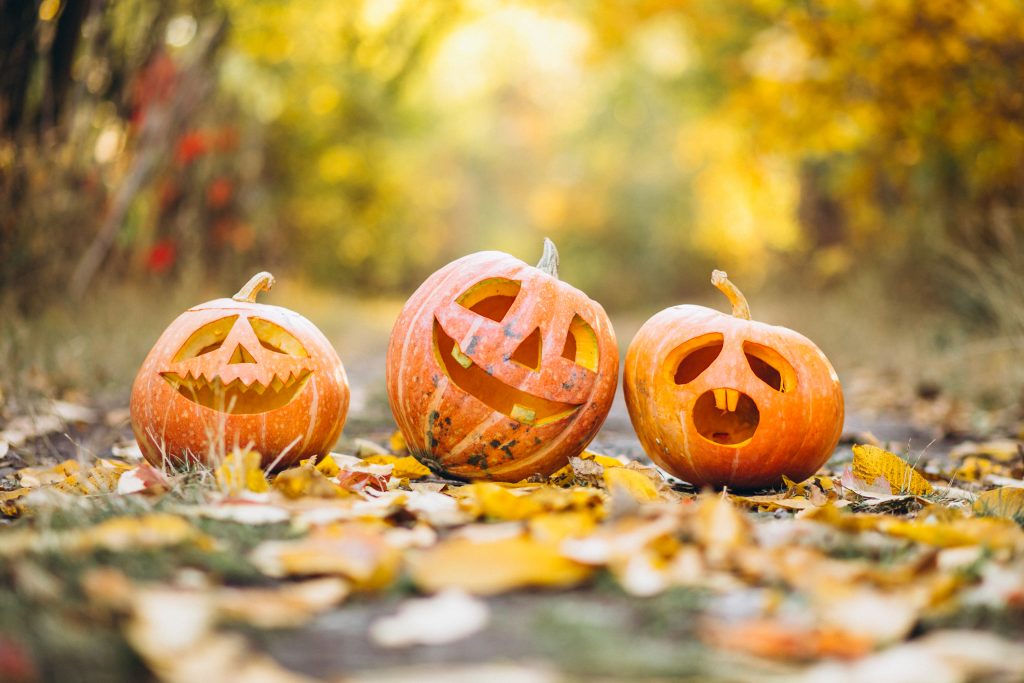
During the mid 19th century, the potato famine in Ireland caused a wave of immigration to the United States. The Irish took with them their many customs, beliefs and superstitions.
There they found that the more readily available pumpkins were very much easier to carve than turnips. So began the tradition of carving pumpkins on Halloween.
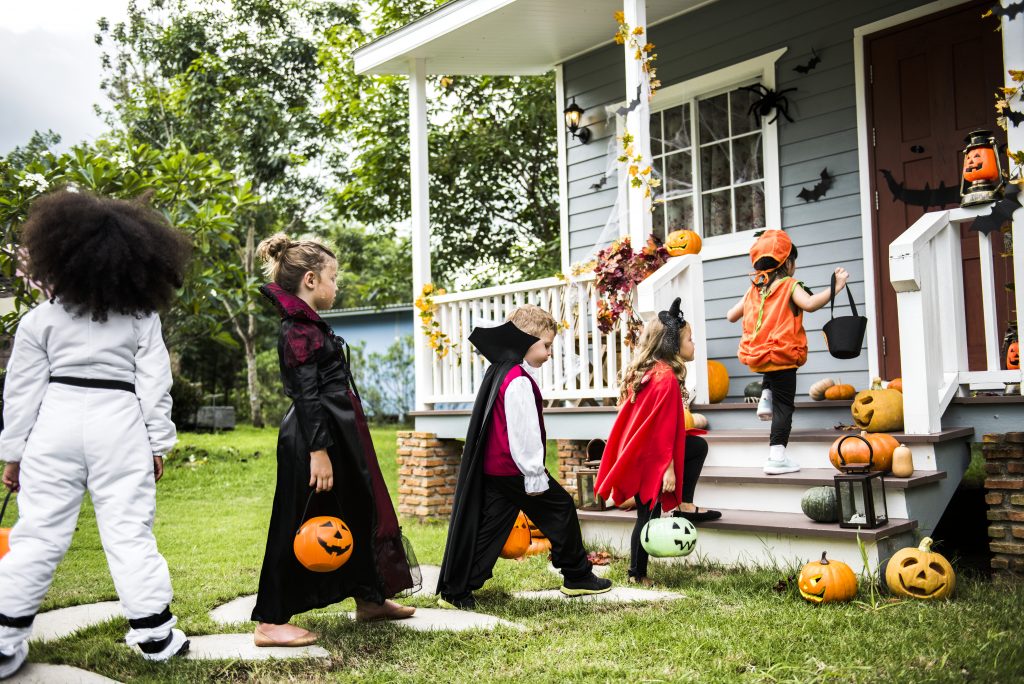
Trick or Treating
During Samhain, families used to set an extra place at the table for the spirits of recently departed loved ones.
They would also cleverly leave food outside by the door. This was to appease unwelcome spirits travelling the earth at night who might come to cause trouble or play tricks on the family.
Over time, people began dressing up as these unearthly beings in exchange for similar offerings of food and drink.
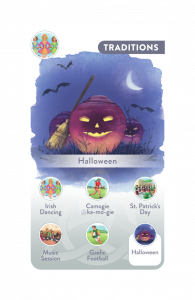
Happy Families Card Game
You can learn about more Irish traditions like Halloween in our new Happy Families Exploring Ireland Card game. A unique recreation of the popular classic game Happy Families but with a new cultural twist. Explore Ireland’s landmarks, mythology, symbols, cities, food, and music while playing this fun game with your families and friends.



